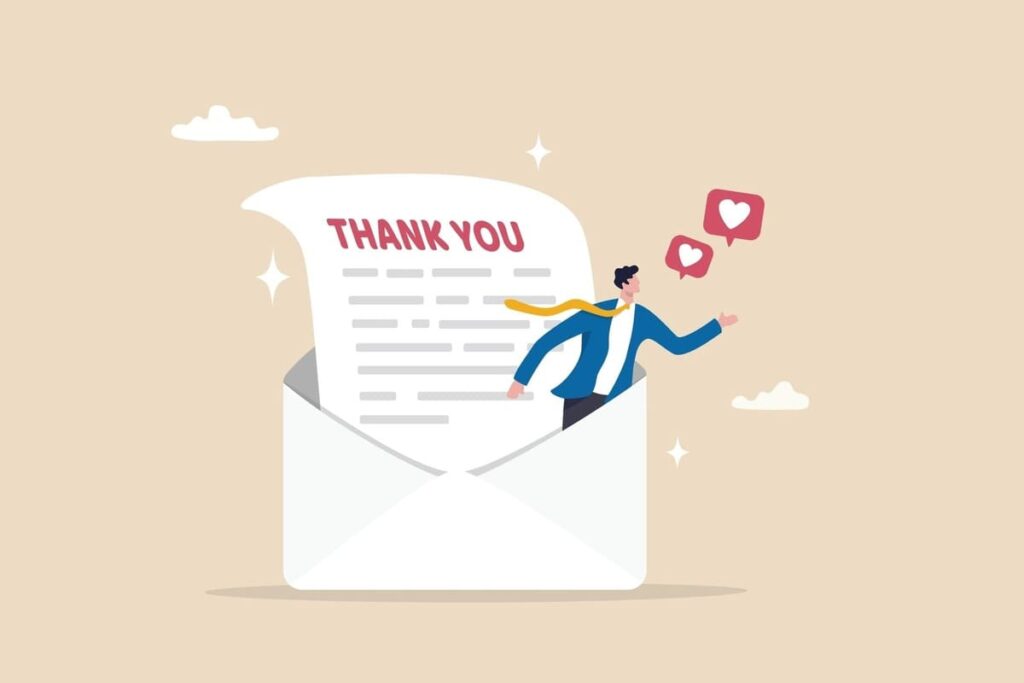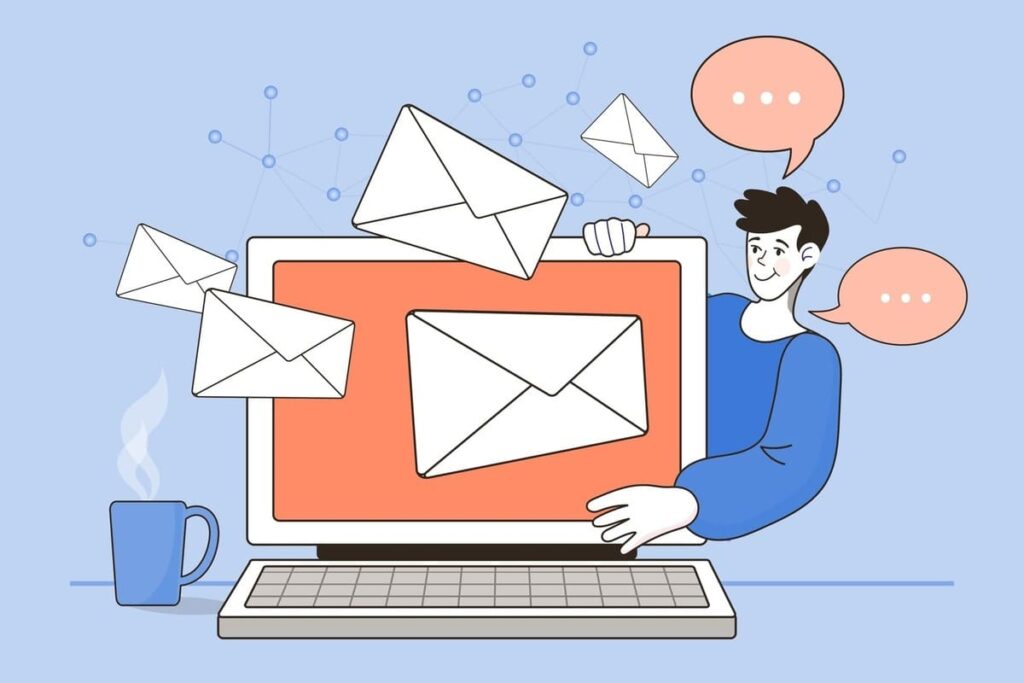The impact of post-purchase emails: boosting sales through cross-selling
Businesses have a 60-70% chance of selling to an existing customer, while the probability of selling to a new customer is only 5-20%. This stark difference underscores the immense potential of post-purchase emails in improving customer retention and increasing customer lifetime value. [1]
By strategically leveraging post-purchase emails, businesses can foster stronger customer relationships, drive repeat purchases, and ultimately boost their bottom line. In this article, we will explore the effective use of post-purchase emails in driving cross-selling, a powerful strategy that involves offering complementary or related products to existing customers.
What is a post-purchase email?
A post-purchase email, as the name suggests, is an automated message that businesses send to customers after they have made a purchase. It serves a multitude of purposes, all aimed at enhancing customer experience and engagement with the brand. Post-purchase emails can include:
- order confirmation details;
- product information;
- customer support contacts;
- reminders for future purchases;
- special offers based on the customer’s recent purchase;
- tips on how to get the most out of the product;
- survey links to collect feedback;
- user-generated content to build a sense of community around the brand.
Discover more about how to improve your customers’ post-purchase experience as an online retailer!
Why should you send post-purchase emails?
Post-purchase emails are an essential tool leveraged by businesses to foster and maintain strong customer relationships. By sending these emails, you are not only reassuring your customers about their purchase, but also providing them with necessary information and engaging them with useful content.
Improved customer retention
Continual interaction with customers doesn’t end when a sale is made; it is only the beginning. When a customer makes a purchase, sending a receipt or confirmation email reassures them that they are dealing with a reputable business. This not only provides a sense of security, but it also builds trust. According to a recent study, a 5% increase in customer retention can increase a company’s profitability by75%. [2]
A surprise and delight strategy can further enhance customer retention. By sending unexpected emails that offer coupons, seasonal promotions, or targeted offers, you give customers a reason to return. These emails can spark interest and improve customer engagement.
Post-purchase emails are an effective way to build stronger relationships with your customers. By showing that you value their business, you foster a stronger connection with them. This relationship can lead to customer retention, as customers are more likely to continue patronizing a brand they feel connected to. A survey found that 89% of customers are likely to make a repeat purchase if they have a positive experience with a brand. [3]
Increased customer lifetime value
One of the key aspects of increasing customer lifetime value is building trust through consistent interaction. Post-purchase emails serve as a regular touchpoint between your business and the customer, establishing a solid level of trust. By maintaining regular communication with customers through post-purchase emails, you demonstrate your commitment to their satisfaction, which can encourage repeat purchases and increase the customer’s lifetime value.
Opportunities for customer feedback
In the competitive business landscape, customer feedback is an invaluable asset. It offers direct insights into customers’ experiences and can help you shape your product or service to better meet their needs. This direct line to your customer’s thoughts and feelings can help you understand what they appreciate about your business, as well as areas where you need to improve.
A post-purchase email is an effective tool for soliciting customer feedback. It can be used to send out surveys or questionnaires, providing a quick and easy way for customers to share their thoughts on your product or service. While not every customer will respond, the feedback you do receive can greatly influence the growth and development of your business.
For example, you can use post-purchase emails to conduct Net Promoter Score (NPS) surveys. NPS is a widely used metric that measures customer loyalty and satisfaction by asking customers to rate how likely they are to recommend your business to a friend or colleague.
Improved brand reputation
Aiming to establish long-term customer relationships through post-purchase emails is also instrumental in improving brand reputation. Loyal customers who consistently choose the brand over others contribute significantly to building a positive brand reputation. This can be reflected in the content of the emails, which should underscore the brand’s commitment to maintaining this relationship.
Essential components of successful post-purchase emails

Successful post-purchase emails have certain features in common:
- Timing of the post-purchase email. Customers expect to receive an email confirmation immediately after making a purchase. This reassures them about their transaction and enhances their overall shopping experience. The timing of such emails can also affect their open rates and thus, the effectiveness of the message being conveyed.
- Personalization. Personalized emails had 29% higher unique open rates and 41% higher unique click rates. This can be achieved by addressing the customer by their name, referencing their recent purchase, and providing relevant recommendations. Such personalized touches make customers feel valued and understood, potentially increasing their satisfaction and loyalty. [4]
- The design and clarity of the post-purchase email. The email should be easy to understand and visually appealing. Clear headings, bullet points, and attractive images can significantly enhance the readability of the email.
- A compelling call to action (CTA). The CTA should guide the customer towards their next step, whether that’s reviewing the product, exploring related products, or availing a special offer. A well-crafted CTA can significantly boost the conversion rates of the email.
The art of the after-sale: cross-sell and upsell post-purchase emails

Cross-selling is the strategy of recommending related or complementary products to a customer’s recent purchase.
Upselling is the practice of encouraging customers to buy a more expensive, upgraded, or premium version of the product they purchased.
The timing of these post-purchase emails plays an important role in their effectiveness. It’s a delicate balancing act. While sending an immediate confirmation email can be an opportunity to cross-sell related products, it’s essential not to overwhelm the customer. Too many emails can give the impression of spam and deter the customer.
The ultimate goal of post-purchase emails should be to enhance the customer’s experience and not just to sell more products. Therefore, these emails should be designed in a non-invasive way, providing customers with useful product recommendations without pushing them towards unnecessary purchases.
Find out more about customer behavior and the psychology of decision-making!
Examples of cross-sell and upsell post-purchase emails
Cross-Sell email example
Subject: Don’t miss out on these complementary items!
Dear [Customer Name],
Thanks for your recent purchase of [Product Name]! We hope you’re enjoying it.
To enhance your experience with [Product Name], we’ve curated a selection of compatible products that might interest you:
[Product 1] – [Brief description]
[Product 2] – [Brief description]
[Product 3] – [Brief description]
Click here to explore these options and add them to your order.
Best regards,
[Your Company Name]
Upsell email example
Subject: Upgrade your experience with [Product Name]
Hi [Customer Name],
We’re excited that you chose [Product Name]! To make the most of your purchase, consider upgrading to our premium version, [Premium Product Name].
[Premium Product Name] features:
[Feature 1]
[Feature 2]
[Feature 3]
Enjoy exclusive benefits and elevate your [Product Category] experience.
[Link to upgrade]
Sincerely,
[Your Company Name]
Looking ahead, the potential future implications of utilizing post-purchase emails effectively are enormous. They will continue to play a key role in maintaining customer relationships, fostering loyalty, and driving repeat business. Businesses are advised to maximize their utility by implementing the strategies and tips discussed in this article.
Sources
[1] “Padrig Jones.” Semrush Blog, 2024, www.semrush.com/blog/customer-retention-stats/. Accessed 27 Aug. 2024.
[2] SuperOffice. “Customer Retention: 5 Unique Strategies to Increase Profits.” Superoffice.co.uk, 2024, www.superoffice.co.uk/resources/articles/customer-retention/. Accessed 27 Aug. 2024.
[3] Scout, Help. “107 Customer Service Statistics and Facts You Shouldn’t Ignore – Help Scout.” Helpscout.com, 2024, www.helpscout.com/75-customer-service-facts-quotes-statistics/. Accessed 27 Aug. 2024.
[4] “Salesforce.” Salesforce, 2022, www.salesforce.com/marketing/email/personalization/#:~:text=Customers%20crave%20this%20kind%20of,41%25%20higher%20unique%20click%20rate. Accessed 27 Aug. 2024.







